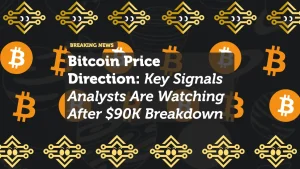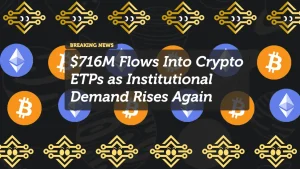
Unveiling the Future: Groundbreaking Trends in Blockchain for 2024
Explore the forefront of technological innovation with our in-depth look at the top blockchain trends of 2024. From the seamless integration of Blockchain 5.0 and its impact on various industries to the expanding role of stablecoins in the digital economy, this article delves into how blockchain is set to enhance everything from finance to IoT. Learn about the transformative potential of smart contracts, the democratization of investment through asset tokenization, and the ongoing evolution of decentralized finance. With insights into regulatory changes and the push towards greener blockchain practices, get ready to discover how these developments could revolutionize the digital landscape.
As we move through 2024, blockchain technology continues to revolutionize industries, offering unprecedented security and efficiency. This dynamic field is evolving rapidly, with several key trends set to reshape the market this year. Here’s an insightful look into what the future holds for blockchain technology.
1. Blockchain 5.0: Enhanced Usability and Integration
Blockchain 5.0 focuses on user-centric enhancements, promising to broaden blockchain’s appeal beyond tech enthusiasts to mainstream users. Innovations in user interface (UI) design and user experience (UX) are making blockchain platforms more intuitive and easier to use. This evolution is crucial as it aims to increase the adoption rates across various sectors, from finance to supply chain management. Market analysts project a significant surge in blockchain technology adoption, with market valuation expected to reach approximately $30.7 billion in 2024, representing a growth rate of 68.5% from the previous year.
2. Stablecoins Gain Mainstream Traction
In the volatile world of cryptocurrencies, stablecoins offer a beacon of stability. These digital currencies, pegged to stable assets like the US dollar, have seen their market cap soar to over $150 billion. Their growth reflects a shift towards more stable, reliable digital assets, especially in commerce and savings. As businesses and consumers increasingly seek financial stability, stablecoins are expected to play a pivotal role in the digital economy, facilitating transactions that are both secure and immediate.
3. Smart Contracts: Automating the Legal and Financial Sectors
Smart contracts are set to further disrupt the legal and financial landscapes by automating standard processes and removing the need for intermediaries. This shift not only cuts down on time and costs but also significantly reduces human error. The smart contract market is rapidly expanding, with a projected market size of $300 million by the end of the year, driven by their increasing implementation in industries such as real estate, insurance, and governmental services.
4. The Convergence of IoT and Blockchain
The integration of blockchain with the Internet of Things (IoT) is a trend that continues to gain momentum. This combination enhances security across the growing network of connected devices. With over 30 billion IoT devices predicted to be online by 2025, blockchain is becoming indispensable in safeguarding these connections, ensuring data integrity, and preventing unauthorized access.
5. Tokenization of Assets: Opening Investment Frontiers
The tokenization of real-world assets—transforming physical assets into digital tokens—continues to democratize investment opportunities. This blockchain application allows for fractional ownership of assets like real estate, art, and even intellectual property. By 2024, the asset tokenization market is forecasted to grow to $4.8 billion, making previously illiquid assets accessible to a broader audience and enhancing market liquidity.
6. Decentralized Finance (DeFi): Expanding Financial Inclusivity
DeFi is revolutionizing the finance sector by enabling peer-to-peer financial services on a global scale. This includes lending, borrowing, and trading in a transparent and automated environment, without traditional banking institutions. The total value locked in DeFi protocols is expected to exceed $100 billion this year, showcasing the increasing trust and utility of decentralized financial services.
7. Regulatory Evolution: Supporting Blockchain Innovation
As blockchain technology becomes more prevalent, the regulatory landscape is evolving to support its safe and effective integration into the global economy. Over 70% of financial institutions are now investing in enhancing regulatory technologies to manage compliance with these new systems. This development is crucial for fostering innovation while ensuring security, transparency, and accountability in blockchain applications.
8. Green Blockchain Initiatives: Towards Sustainable Practices
Recognizing the environmental impact of blockchain technologies, especially those associated with cryptocurrencies like Bitcoin, there is a strong move towards more sustainable practices within the blockchain space. Innovations such as proof-of-stake algorithms are being more widely adopted, significantly reducing the energy consumption compared to the traditional proof-of-work systems.
The advancements in blockchain technology in 2024 are not just enhancing existing applications but are also paving the way for new possibilities. From enhancing financial inclusivity to revolutionizing asset management, blockchain continues to offer robust solutions that promise a more secure, efficient, and equitable global infrastructure.














